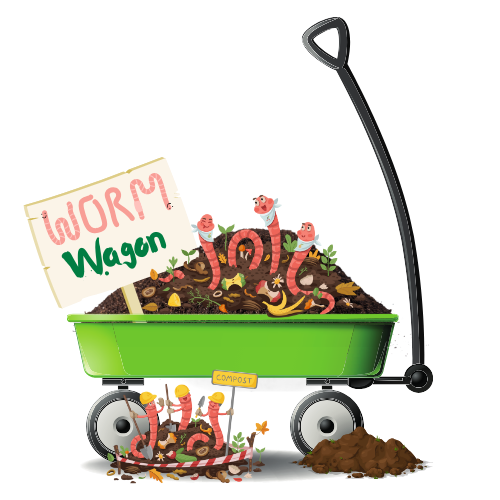Welcome back to The Worm Wagon! If you’re gardening in a small space, vertical gardening is a fantastic solution to maximize your growing area. By growing up instead of out, you can make the most of your limited space while creating a lush, green oasis. Today, we’ll guide you through various vertical gardening techniques that are perfect for your Zone 6a garden. Let’s get started!
Why Vertical Gardening?
Vertical gardening involves growing plants on structures like trellises, walls, or towers. This method offers several benefits:
• Space Efficiency: Maximizes limited space by utilizing vertical areas.
• Improved Air Circulation: Reduces disease by allowing better air flow around plants.
• Ease of Access: Makes harvesting easier and can reduce back strain.
• Aesthetic Appeal: Creates visually striking garden designs.
Techniques for Vertical Gardening
1. Trellises
• Description: Trellises are structures made of wood, metal, or plastic that support climbing plants.
• Suitable Plants: Beans, peas, cucumbers, and tomatoes.
• How to Use: Install trellises along garden beds or in containers. Train plants to climb the trellis by gently tying them with garden twine.
2. Arbors and Arches
• Description: These decorative structures provide support for climbing plants while adding a focal point to your garden.
• Suitable Plants: Climbing roses, wisteria, and grapevines.
• How to Use: Position arbors or arches at garden entrances or along pathways. Plant climbers at the base and train them to grow over the structure.
3. Wall Planters
• Description: Wall-mounted planters are containers attached to walls or fences, perfect for growing a variety of plants.
• Suitable Plants: Herbs, lettuce, strawberries, and flowers.
• How to Use: Attach planters to a sunny wall or fence. Ensure they have proper drainage and fill them with high-quality potting mix. Plant your desired crops and water regularly.
4. Vertical Pallet Gardens
• Description: Recycled pallets can be turned into vertical gardens by adding soil and plants between the slats.
• Suitable Plants: Succulents, small herbs, and annual flowers.
• How to Use: Secure the pallet to a wall or fence. Fill with soil and plant in the gaps between slats. Ensure the pallet is positioned vertically and securely.
5. Hanging Baskets
• Description: Hanging baskets are suspended containers that add vertical interest to your garden.
• Suitable Plants: Trailing plants like strawberries, petunias, and ivy.
• How to Use: Hang baskets from hooks or brackets in sunny locations. Use lightweight potting mix and water regularly to keep plants hydrated.
6. Stacked Planters
• Description: Stacked planters are tiered containers that allow multiple levels of planting.
• Suitable Plants: Herbs, strawberries, and small vegetables.
• How to Use: Arrange planters in tiers and fill with soil. Plant each level with compatible plants and ensure proper watering.
Tips for Successful Vertical Gardening
• Sunlight: Place vertical structures in areas that receive adequate sunlight for the plants you’re growing.
• Watering: Vertical gardens can dry out faster than traditional gardens. Check moisture levels regularly and water as needed.
• Support: Ensure that all structures are sturdy and can support the weight of mature plants.
• Maintenance: Prune and train plants regularly to keep them healthy and well-supported.
Final Thoughts
Vertical gardening is an innovative way to make the most of your garden space, especially in urban or limited areas. By using trellises, wall planters, and other vertical structures, you can create a productive and visually appealing garden that fits perfectly in Zone 6a. Give these techniques a try and enjoy the benefits of growing up instead of out!
Stay tuned for more gardening tips and inspiration from The Worm Wagon!
Until next time, Happy Gardening!
Lindsay








Leave a comment